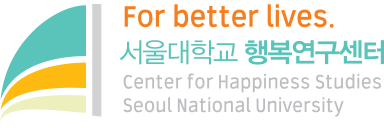최근 많은 연구들을 통해 경험 구매 (경험하기 위한 소비)가 물질 구매 (소유하기 위한 소비)에 비해 행복에 더 유리하다는 것이 밝혀져 왔으나, 아직 경험/물질 구매의 구분에 대해서는 해결되지 않은 문제들이 남아있다. 본 연구에서는 경험 구매와 물질 구매 사이의 애매한 경계에 대한 두 가지 질문들을 다루고자 한다. 첫째, 행복한 사람일수록 같은 구매라도 더 경험재에 가깝게 인식하는가? 둘째, 자신의 구매를 경험재에 가깝게 생각하면, 실제로 더 행복해지는가? 실험 방법과 경험 표집법(Experience Sampling Method)을 통한 연구 결과, 행복 수준이 높은 사람들일수록 낮은 사람들보다 같은 구매라도 더 경험재에 가깝게 바라보는 것으로 나타났다. 또한, 일주일의 중재 기간(Intervention) 동안 본인의 구매를 경험하기 위한 대상으로 인식했던 연구 참가자들이 실제로 더 높아진 행복도를 보고하였다. 이러한 변화는 다른 통제 집단 (자신의 구매를 계획하는 연습을 한 집단, 자신의 구매 내역만을 보고한 집단)에서는 나타나지 않았다. 본 연구 결과는 행복한 사람들이 구매의 경험적 측면을 더 즐길 줄 알며, 이러한 관점을 연습하는 것이 실제 행복감 증진에도 기여함을 보여준다.
Despite much research indicating the benefits experiential purchases (buying to do) have on happiness compared to material purchases (buying to have), there are still unanswered questions about the material-experiential dimension. I posed two questions regarding the fuzzy boundary: 1) Do happy people perceive purchases as more experiential?, and 2) Will people be happier if they learn to think of their purchases as more experiential? Using a multi-method approach, including experimental and experience sampling methods, I found that those with higher levels of happiness viewed the same purchases as more experiential than did less happy people in both hypothetical setting and everyday life. More importantly, people reported increased happiness after a 1-week intervention in which they were asked to view their purchases as experiential, whereas control groups (one focusing on planning for their purchases and the other group only reporting their purchases) did not show any changes. The findings suggest that happy people enjoy more experiential aspects of purchases and that practicing such outlook contributes to enhancing one’s happiness.
오혜원. (2015). The relationship between happiness and perception of purchases: Experiential versus material. 서울대 석사학위논문.




![[연구참여자 모집/사례 지급] 자유연상 패턴과 심리적 속성 간의 관계 탐색](https://happyfinder.co.kr/wp-content/uploads/2024/05/워드프레스_연구참여자모집-360x180.png)









![[연구참여자 모집/사례 지급] 자유연상 패턴과 심리적 속성 간의 관계 탐색](https://happyfinder.co.kr/wp-content/uploads/2024/05/워드프레스_연구참여자모집-350x250.png)

